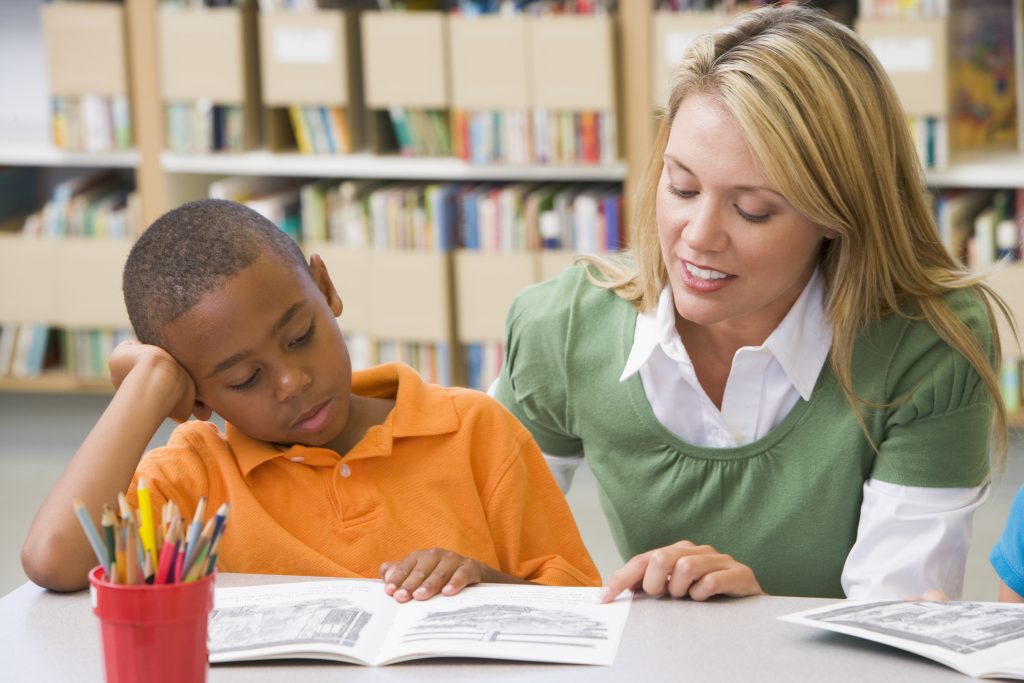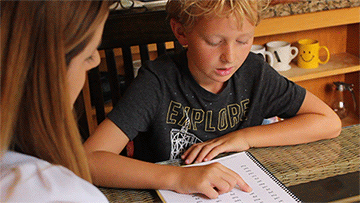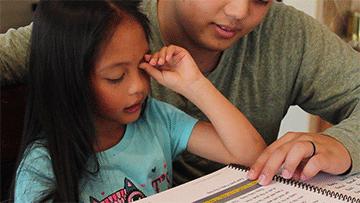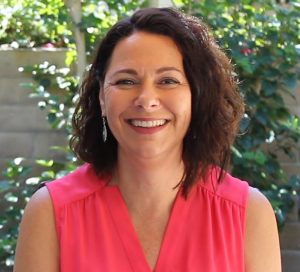
by PRIDE Reading Program Admin | Jan 16, 2018 | A PRIDE Post, Dyslexia, Multisensory Teaching, Orton-Gillingham

Learning to read in English would be so easy for kids with Dyslexia if all similar-sounds were spelled the same. They aren’t. English is so hard to learn and has so many unfair and horrible spelling rules! Ugggh!
Many of us just read naturally. We understand that letters and letter combinations create words and sounds. Our brains just naturally register the words in print and we can read three or four words ahead of time and visually scan an entire text. We are also mentally able to pull words apart, separate them into syllables and apply all of those horribly unfair spelling rules easily and logically.
In the beginning…
Reading is complicated. There are 3 major stages that a child will need to go through in their lifetime to become a strong reader. This process involves word recognition, comprehension, fluency, and most importantly… motivation. The following outlines the key features of the reading process at each stage:

Stage 1 of the Reading Process: Decoding (Ages 6-7)
At this stage, beginning readers learn to decode by sounding out words. They comprehend that letters and letter combinations represent sounds and use this information to blend together simple words such as hat or dog.
Stage 2 of the Reading Process: Fluency (Ages 7-8)
Once children have mastered the decoding skills of reading, they begin to develop fluency and other strategies to increase meaning from print. These children are ready to read without sounding everything out. They begin to recognize whole words by their visual image and orthographic knowledge. They identify familiar patterns and achieve automaticity in word recognition and increase fluency as they practice reading recognizable texts.
 Stage 3 or the Reading Process: Comprehension (Ages 8-14)
Stage 3 or the Reading Process: Comprehension (Ages 8-14)
Children in this stage have mastered the reading process and are able to sound out unfamiliar words and read with fluency. Now the child is ready to use reading as a tool to acquire new knowledge and understanding. During this stage, vocabulary, prior knowledge, and strategic information become of utmost importance. Children will need to have the ability to understand sentences, paragraphs, and chapters as they read through text. Reading instruction during this phase includes the study of word morphology, roots, prefixes as well as a number of strategies to help reading comprehension and understanding.
Let’s keep it simple…
I’m not going to get too deep into the semantics of each reading phase and how it all works but Dr. G. Reid Lyon, a researcher in the field of neurology of dyslexia wrote a great article on children and the process of reading if you want to read it here.
So…now that you understand that there is a natural progression to reading, the big question is, will a child with dyslexia eventually learn to read naturally as they mature….
Will the reading come naturally for a dyslexic child at some point?
Nope. Reading does NOT and never will come naturally for a dyslexic child. A child with dyslexia does not wake up one morning and say, “I get it mom, it all makes sense now!” Nope. Unfortunately this isn’t going to happen.
This is just a fact. The International Dyslexia Association has a really good fact sheet on Dyslexia and the Brain. You can read about it here.
Children with dyslexia read and spell everything phonetically and do not apply spelling rules. For example, if they are spelling the word “said“ they will write “sed.” When reading the word “horse,” the dyslexic child will make a mental picture of that word and every time he or she approaches the word “horse” in text, that mental picture comes to life. The problem with this strategy is that when they get to a word that they are unfamiliar with, they have no coping mechanisms to attack that particular word. Yikes!
There is GREAT news for kids with Dyslexia!!!
Even though the reading and spelling does not come naturally for a child with dyslexia, this does not mean that they can’t learn to read and spell. Kids with Dyslexia are really bright kids, that just need a different approach to reading and spelling. They need to learn the letters and letter combinations in a very very structured, systematic and cumulative approach. They need lots of repetition and practice and they need a lot of positive encouragement. Children with dyslexia need 3 crucial elements to their reading instruction:
Multisensory Teaching
Orton-Gillingham Program
Parent Support
What does multisensory mean?
See it – Say it – Hear it – Move with it!
When taught with a multi-sensory approach, children will learn all the letters, letter combinations, sounds and words by using all of their pathways – hearing (auditory), seeing (visual), touching (tactile) and moving (kinesthetic).
 When learning the vowel combination ‘oa,’ for example, the child might first look at the letter combination on a picture of a GOAT, then close his/her eyes and listen to the sound, then trace the letters in the air while speaking out loud. This combination of listening, looking, and moving around creates a lasting impression for the child as things will connect to each other and become memorable. Using a multi-sensory approach to reading will benefit ALL learners, not just those with dyslexia.
When learning the vowel combination ‘oa,’ for example, the child might first look at the letter combination on a picture of a GOAT, then close his/her eyes and listen to the sound, then trace the letters in the air while speaking out loud. This combination of listening, looking, and moving around creates a lasting impression for the child as things will connect to each other and become memorable. Using a multi-sensory approach to reading will benefit ALL learners, not just those with dyslexia.
What is Orton-Gillingham?
The other significant component in helping a child with dyslexia learn to read and spell is utilizing an Orton-Gillingham approach. In Orton-Gillingham, the sounds are introduced in a systematic, sequential and cumulative process. The Orton-Gillingham teacher, tutor or parent begins with the most basic elements of the English language. Using lots of different multisensory strategies and lots of repetition, each spelling rule is taught one at a time. By presenting one rule at a time and practicing it until the child can apply it with automaticity and fluency, a child with dyslexia will have no reading gaps in their reading and spelling skills.
Children are also taught how to listen to words or syllables and break them into individual sounds. They also take each individual sounds and blend them into a words, change the sounds in the words, delete sounds, and compare sounds. For example, “…in the word steak, what is the first sound you hear? What is the vowel combination you hear? What is the last sound you hear? Children are also taught to recognize and manipulate these sounds. “…what sound does the ‘ea’ make in the word steak? Say steak. Say steak again but instead of the ‘st’ say ‘br.’- BREAK!
Every lesson the student learns in Orton-Gillingham is in a structured and orderly fashion. The child is taught a skill and doesn’t progress to the next skill until the current skill is mastered. Orton-Gillingham is extremely repetitive. As the children learn new material, they continue to review old material until it is stored into the child’s long-term memory.
It is like learning a foreign language.
Kids with Dyslexia need more structure and repetition in their reading instruction. They need to learn basic language sounds and the letters that make them, starting from the very beginning and moving forward in a gradual step by step process. Think of it as if your child is learning a foreign language for the first time. He or she needs to start at the very beginning, learn the pronunciation of each letter in the alphabet as well as all the different spelling and language rules related to the foreign language. This needs to be delivered in a systematic, sequential and cumulative approach. For all of this to “stick” the child will need to do this by using their eyes, ears, voices, and hands.
If you want to learn more about an Orton-Gillingham Dyslexia Reading Program click on the video below:
If you enjoyed reading this post, you might also enjoy reading, My child might have Dyslexia… what do I do?
Thank you so much for visiting my Blog today!

Karina Richland, M.A., developed the PRIDE Reading Program, an Orton-Gillingham program for struggling readers, based on her extensive experience working with children with learning differences over the past 30 years. She has been a teacher, educational consultant and the Executive Director of PRIDE Learning Centers in Southern California. Please feel free to email her with any questions at info@pridelearningcenter.com. Visit the PRIDE Reading Program website at https://www.pridereadingprogram.com

by PRIDE Reading Program Admin | Jan 31, 2016 | A PRIDE Post, Orton-Gillingham
Learning to read in English would be such a simple task if all similar-sounding phonemes were spelled the same. They aren’t. English is such an unfair language with so many iniquitous rules! For most of us, learning to read means memorizing the symbolic code of letter combinations and then using them in new contexts. Many of us just read naturally, understanding that these letter combinations create words and sounds. Linguists call these sounds ‘phonemes.’ Our brains just register the words and are equipped to read three or four words ahead of time. We are also mentally able to pull words apart, separate them into syllables and apply all of those unfair spelling rules easily and logically.
For a student with a reading disability, this process of reading does NOT come naturally. Students with dyslexia, for example, do not use the process of sounding out phonemes (decoding) while reading and applying spelling rules while writing (encoding). Dyslexics, in general, memorize words in entirety and make mental pictures of each word they learn. The predicament with this strategy is that when they get to a word that they are unfamiliar with, they have no coping mechanisms to attack that particular word.
An example of the difficulty for some of us to learn which combination of letters creates which phoneme is the sound of the letter ‘a’ as in the word ‘cake.’ The long ‘a’ sound is written differently in different words, as in baby, ape, sail, play, steak, vein, eight and they. For students with reading disabilities, something interferes with the acquisition of these written phonemes, and in order to learn, these students must be taught how to read in a different way. One such way is using a multi-sensory method.
Students with a reading disability often struggle with auditory and/or visual processing. They have troubles recalling words and how they are pronounced. This means that they do not comprehend the roles that sounds play in words. These students have difficulties rhyming words as well as blending sounds together to form words. These students do not understand or acquire the alphabetic system expected of them in the early years. If a student with a learning difference is given a task that uses just hearing and vision, without drawing upon other senses, this student will be at a disadvantage. When taught with a multi-sensory approach, students will learn alphabetic patterns, phonemes and words by utilizing all pathways – hearing (auditory), seeing (visual), touching (tactile) and moving (kinesthetic).
When learning the vowel combination ‘oa,’ for example, the student might first look at the letter combination on a picture of a GOAT, then close his/her eyes and listen to the sound, then trace the letters in the air while speaking out loud. This combination of listening, looking, and moving around creates a lasting impression for the student as things will connect to each other and become memorable. Using a multi-sensory approach to reading will benefit ALL learners, not just those with reading disabilities.
The other significant component in helping a struggling reader learn to read and write is utilizing an Orton-Gillingham approach. In Orton-Gillingham, the phonemes are introduced in a systematic, sequential and cumulative process. The Orton-Gillingham teacher begins with the most basic elements of the English language. Using repetition and the sequential building blocks of our language, phonemes are taught one at a time. This includes the consonants and sounds of the consonants. By presenting one rule at a time and practicing it until the student can apply it with automaticity and fluency, students have no reading gaps in their word-decoding skills. As the students progress to short vowels, they begin reading and writing sounds in isolation. From there they progress to digraphs, blends and diphthongs.
Students are taught how to listen to words or syllables and break them into individual phonemes. They also take individual sounds and blend them into a word, change the sounds in the words, delete sounds, and compare sounds. For example, “…in the word steak, what is the first sound you hear? What is the vowel combination you hear? What is the last sound you hear? Students are also taught to recognize and manipulate these sounds. “…what sound does the ‘ea’ make in the word steak? Say steak. Say steak again but instead of the ‘st’ say ‘br.’- BREAK!
Every lesson the student learns is in a structured and orderly fashion. The student is taught a skill and doesn’t progress to the next skill until the current lesson is mastered. As students learn new material, they continue to review old material until it is stored into the student’s long-term memory. While learning these skills, students focus on phonemic awareness. There are 181 phonemes or rules in Orton-Gillingham for students to learn. Advanced students will study the rules of English language, syllable patterns, and how to use roots, prefixes, and suffixes to study words. By teaching how to combine the individual letters or sounds and put them together to form words and how to break longer words into smaller pieces, both synthetic and analytic phonics are taught throughout the entire Orton-Gillingham program.
Students with reading disabilities need more structure, repetition and differentiation in their reading instruction. They need to learn basic language sounds and the letters that make them, starting from the very beginning and moving forward in a gradual step by step process. This needs to be delivered in a systematic, sequential and cumulative approach. For all of this to “stick” the students will need to do this by using their eyes, ears, voices, and hands.
Learn more about the New PRIDE Reading Program
__________________________________________________________________________________
Karina Richland, M.A. is the Managing Director of Pride Learning Centers, located in Southern California. Ms. Richland is a reading and learning disability specialist. She speaks frequently to parents, teachers, and professionals on learning differences, and writes for several journals and publications. You can visit the website www.pridelearningcenter.com
by PRIDE Reading Program Admin | Aug 2, 2011 | Orton-Gillingham
A Book Review by Karina Richland, M.A., E.T.
The Shut-Down Learner by Richard Selznick, PhD, is a very parent friendly book written for parents and teachers of children and students with learning disabilities, primarily dyslexia.
The Shut down learner is a visual-spatial child that has a unique set of strengths and weaknesses. Dr. Selznick refers to these children as “the Lego kid.” The Lego kid does not succeed in school because others do not understand and value his strengths and everyone focuses too much on his weaknesses.
The weaknesses of these children are very low linguistic-verbal intelligence. They struggle considerably with reading, spelling and writing. Despite attempts from special educators and remedial teachers to help these children fail in these areas of weakness, the progress for these children is slow and often even unrecognizable.
The strengths of the Shut-Down Learner are excellent spatial and visual perceptual organization skills. This attribute is his most defining indicator and the author stresses this strength throughout the entire book. The SDL child can visualize things well. They learn through visualization and not through language.
The High-Spatial Characteristics include:
- Lego kid
- Loves puzzles
- Engages for hours with hands-on-activities
- Likes taking things apart to see how they work
- Enjoys hooking things up, such as entertainment systems
- Good awareness of visual detail
- Excellent visual recall
- Does well with psychological assessment tasks that involve spatial analysis
- Enjoys doing tasks and is movement-based
The curriculum is a major obstacle for these students. They will not thrive under the regular curriculum because of their severe language acquisition deficiencies. Dr. Selznick recommends Orton-Gillingham remediation as part of the student’s education. This instruction will help these children overcome the worst of their deficiencies. The SDL child will also need heavy focus on the areas in which he can excel and have confidence in. These are the areas of visual-spatial and kinesthetic intelligences.
I did enjoy reading this book and would recommend it to parents and teachers of struggling readers. I do want to mention though, that not all children with dyslexia and learning disabilities are gifted in the visual-spatial skills. I work with many students with dyslexia who do not perform well in visual-spatial tasks and do not enjoy building with legos or taking engines apart.
Multisensory learning is the key factor and will benefit struggling readers. We all learn a different way, and we each have our own set of strengths and weaknesses. It is so important to always point this out to our children.
____________________________________________________________________________________________
Karina Richland, M.A., E.T. is the Managing Director of Pride Learning Centers, located in Los Angeles and Orange County. A former teacher for Los Angeles Unified School District, Ms. Richland is a reading and learning disability specialist. Ms. Richland speaks frequently to parents, teachers, and professionals on learning differences, and writes for several journals and publications. You can reach her by email at: info@pridelearningcenter.com or visit the Pride Learning Center website at:
www.pridelearningcenter.com

 Stage 3 or the Reading Process: Comprehension (Ages 8-14)
Stage 3 or the Reading Process: Comprehension (Ages 8-14) When learning the vowel combination ‘oa,’ for example, the child might first look at the letter combination on a picture of a GOAT, then close his/her eyes and listen to the sound, then trace the letters in the air while speaking out loud. This combination of listening, looking, and moving around creates a lasting impression for the child as things will connect to each other and become memorable. Using a multi-sensory approach to reading will benefit ALL learners, not just those with dyslexia.
When learning the vowel combination ‘oa,’ for example, the child might first look at the letter combination on a picture of a GOAT, then close his/her eyes and listen to the sound, then trace the letters in the air while speaking out loud. This combination of listening, looking, and moving around creates a lasting impression for the child as things will connect to each other and become memorable. Using a multi-sensory approach to reading will benefit ALL learners, not just those with dyslexia.



